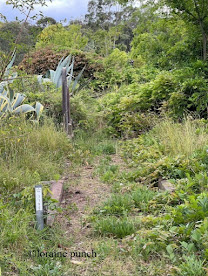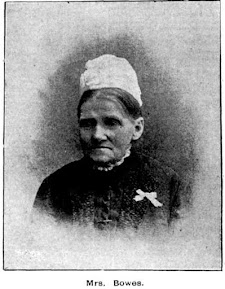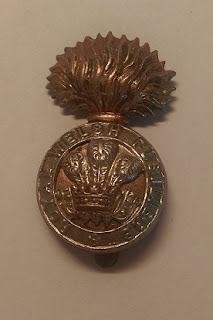A beast of a fire in July 1901
On the 10th of July 1901, people were astonished to read in their afternoon newspaper edition that a massive fire had broken out at the Hordern's Palace Emporium Haymarket. The main buildings had been destroyed with damages estimated at £1,000,000. The tragic news received was that 5 employees had lost their lives.
*Warning: graphic details are contained herein*
THE HORDERN PALACE EMPORIUM FIRE OF 1901
Before I expand on the tragic incident, let me quickly touch on the origins of the firm. It began as a drapery business of Mrs. Ann (Anthony) Hordern in 1823 which eventually moved to Melbourne in 1839 but their sons Anthony II and Lebbeus returned in 1844 to set up their own drapery firm in George Street. The business moved to larger premises in the Haymarket in 1856 and by the time Anthony II's sons, Anthony III and Samuel joined the business in 1869 the firm was called Anthony Hordern & Sons. During the 1870's the company purchased several surrounding buildings and reconstructed them into the substantial 1879 Palace Emporium with a staff of over 300.
More sites were added in the 1880's and the firm became known as Universal Providers, selling a huge range of goods, divided into several different departments. A number of the family members established their own retail stores and became rivals for trade. In 1886, after the tragic death of Anthony III, Samuel became the sole proprietor of the Emporium.
The Hordern Palace Emporium 1888 illustrated by W. Frederic Morrison, The Aldine Centennial history of NSW - Museum of History NSW
The story of the Hordern dynasty is a fascinating one with many avenues, too large to be explored in this blog today.
The Palace Emporium at the beginning of the 20th century was almost monolithic taking up a huge parcel of land bounded by George, Barlow (Gipps at the time) and Pitt Streets and employing 1200 serving up to 30,000 customers per day.
At 8.20am on Wednesday, the 10th of July 1901, a blaze broke out in the basement toy department when an electric wire fused. A spark ignited synthetic toys, and the fire spread quickly to other flammable goods. In a matter of moments, the fire had climbed from the basement to the ground floor with staff and customers racing for the exits.
Within a few minutes the first horse-drawn fire engine arrived, and Superintendent Webb saw on the Gipps Street frontage that the Emporium was an inferno and there was no chance of saving it. The wind fanned the flames, and ten fire-engines could not stop them. The fire was quickly expanding to the eight storey furniture department which ran through to Pitt Street.
Several employees banded together to set up their own fire-fighting operation. William Dashwood and Walter Brett started a pumping engine to get water but only three men had stayed in the building to man the hoses: John Nichol, Robert Malcolm and George Mills. It proved to be a futile effort.
Meanwhile on the street an employee, Harry Clegg, who was late for work that day arrived to find the building alight. He advised his boss that he would get into the building and help with the hoses. Although told not to enter, Harry did and raced up the fifth floor of the furniture department. All men were oblivious of three floors bursting into flames within minutes which was witnessed by the fire chief and the furniture storeman William Farrell who decided with George Mills to run through the flames and warn the others to get out. All three made it out with various degrees of injury. Farrell advised John Nichol to head for the goods lift and shimmy down. Nichol was to die, incinerated on the roof of the lift.
Palace Emporium on fire from Harris Street 10th July 1901 - City of Sydney archives
Farrell then remembered Dashwood and Brett and went to re-enter the building but was held back, finding later that at that time both had been incinerated.
Harry Clegg and Robert Malcolm had panicked and headed for the roof but that was soon engulfed as well, and the only place left was up to the brick parapet. Clegg managed to climb up and Malcolm followed but lost his footing and went falling back into the inferno.
Clegg waited 30 minutes perched precariously waiting for help to arrive, it was found that the Fire ladders were unable to reach him, and the team began to climb up to save him, a tarpaulin was placed for him to leap into but as he did the height proved so great he fell to his death.
The fire was so intense that it melted lead roofs 150m away, but it was lucky that the gas tanks had been switched off at Superintendent Webb's early instructions. By early afternoon the fire had been extinguished in all the buildings, but the Emporium was in ruins, and it seemed that Anthony Hordern's was finished.
Aftermath - - City of Sydney archives
Aftermath - northwest corner - City of Sydney archives
This wasn't the case. Within 24 hours of the fire Samuel Hordern had leased the large Exhibition Building in Prince Alfred Park as temporary premises and within 48 hours was open for business utilising stock stored in warehouses.
The Hordern Palace Emporium fire resulted in stricter safety measure in city buildings and gave greater controls to the Metropolitan Fire Brigade.
Soon after Samuel Hordern purchased a 2.5-hectare site on George Street at Brickfield Hill (where World Square is now located) and erected a store that became the retail wonder of Sydney.
Anthony Hordern's new Palace Emporium 1935 - Wikicommons
Of the five men who lost their lives, two of them are buried in Rookwood in the Anglican area.
Walter Brett - 24 years of age buried with his parents and brother. Under his name is etched "who lost his life having no means of escape at Horderns Fire 10th July 1901"
Walter Brett headstone - author's own collection
the other victim was his supervisor
William Dashwood - 43 years of age buried with four of his children. I was unable to view the grave site due to overgrowth, but I have included a photo of the proximity.
William Dashwood grave on right hand side covered by overgrowth - author's own collection
The remaining three were
Harry Clegg - 22 years old - buried in Waverley Cemetery.
Robert Malcolm - 22 years old - buried in Woronora Cemetery
John Nichol (name reportedly spelt incorrectly in many reports) - apparently 16 years old and unable to locate cemetery.
MAY THEY ALL REST IN PEACE
A tragedy but it would appear an accident waiting to happen. Why does it always take a horrible event with loss of life before any action is taken?
The moments of death must have been an absolute nightmare I can't begin to imagine but their deaths did bring about. better fire regulations to protect us all.
I have found no reference to any memorial plaque erected honouring the victims of the fire.
Anthony Horderns Emporium traded until the early 1980's then closed and was demolished. It was many years before World Square was built.
For my references today I utilised ancestry.com; Wikipedia; State Library of NSW; National Library of Australia, trove newspaper articles - Argus (Melbourne) 11th July 1901 and the Barrier Miner (Broken Hill - the news was reported far and wide) 11 July 1901 well as a Daily Telegraph Historical Feature of indeterminant age.
Many of the Hordern family are buried in Rookwood today but due to the subject of this blog today I will not be highlighting their locations.
If you have any comments to make or insights to add regarding this blog today, please add them below or at the group Facebook page found under
Rookwood Cemetery Discoveries
or send me a personal message via
lorainepunch@gmail.com
Until next week










Comments
Post a Comment